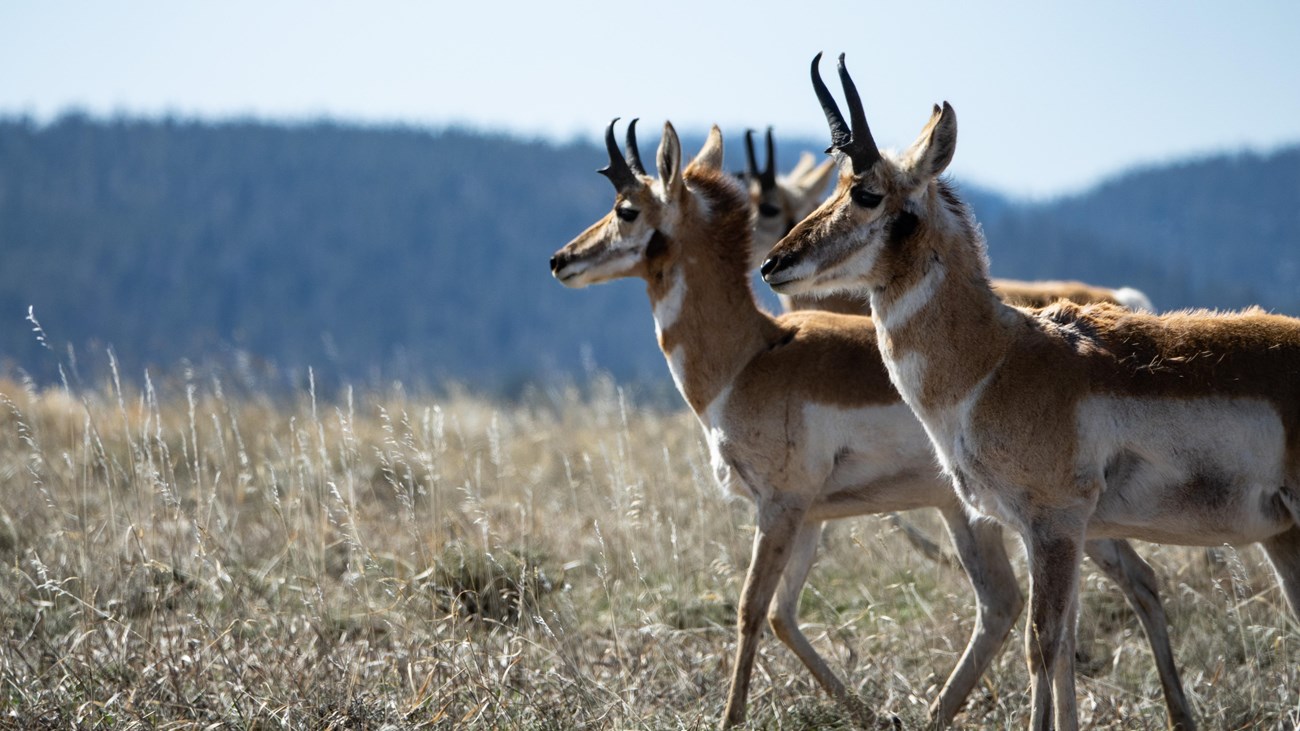Last updated: May 3, 2021
Thing to Do
Catch a glimpse of the fast Pronghorn gliding through the Hills

Kadi Franson
One of the park's most unusual residents is the pronghorn “antelope”. Pronghorns are found in North America and nowhere else in the world. They have roamed the plains and deserts unchanged for over a million years. Some call them antelope because they resemble African antelope, although the two are not closely related. They are the only surviving member of their family, Antilocapridae. The pronghorn’s closest living relatives are the giraffe and okapi.
Description
Pronghorns vary from light tan to a rich brown with white patches on the stomach, neck, and rump. When threatened, the hairs of the rump bristle, signaling to would-be predators that they have been spotted. This also signals to other pronghorns that there is danger nearby. Pronghorn bucks have black patches on the lower jaw below the eye and a black mask extending back from the nose. These markings make it easier to distinguish the male from the female. The pronghorn’s large eyes give them exceptional vision. They also have keen hearing and sense of smell.
As the fastest North American land mammal, pronghorns can reach speeds up to 60 miles per hour for about half a mile. At top speed, they cover the ground in strides up to 24 feet and can run for longer distances at speeds of 30 to 40 miles per hour. There are no predators that can match their speed today, so it’s thought that they evolved to outrun the extinct American cheetah.
Tips to Spotting Them
Pronghorns can be found roaming throughout the whole park.
Please Remember: DO NOT FEED THE WILDLIFE.
Description
Pronghorns vary from light tan to a rich brown with white patches on the stomach, neck, and rump. When threatened, the hairs of the rump bristle, signaling to would-be predators that they have been spotted. This also signals to other pronghorns that there is danger nearby. Pronghorn bucks have black patches on the lower jaw below the eye and a black mask extending back from the nose. These markings make it easier to distinguish the male from the female. The pronghorn’s large eyes give them exceptional vision. They also have keen hearing and sense of smell.
As the fastest North American land mammal, pronghorns can reach speeds up to 60 miles per hour for about half a mile. At top speed, they cover the ground in strides up to 24 feet and can run for longer distances at speeds of 30 to 40 miles per hour. There are no predators that can match their speed today, so it’s thought that they evolved to outrun the extinct American cheetah.
Tips to Spotting Them
Pronghorns can be found roaming throughout the whole park.
Please Remember: DO NOT FEED THE WILDLIFE.
Details
Activity
Wildlife Watching
Pets Allowed
No
Activity Fee
No
Entrance fees may apply, see Fees & Passes information.
Reservations
No
Season
Year Round
Accessibility Information
Information and facts about the Pronghorns that roam Wind Cave National Park.
